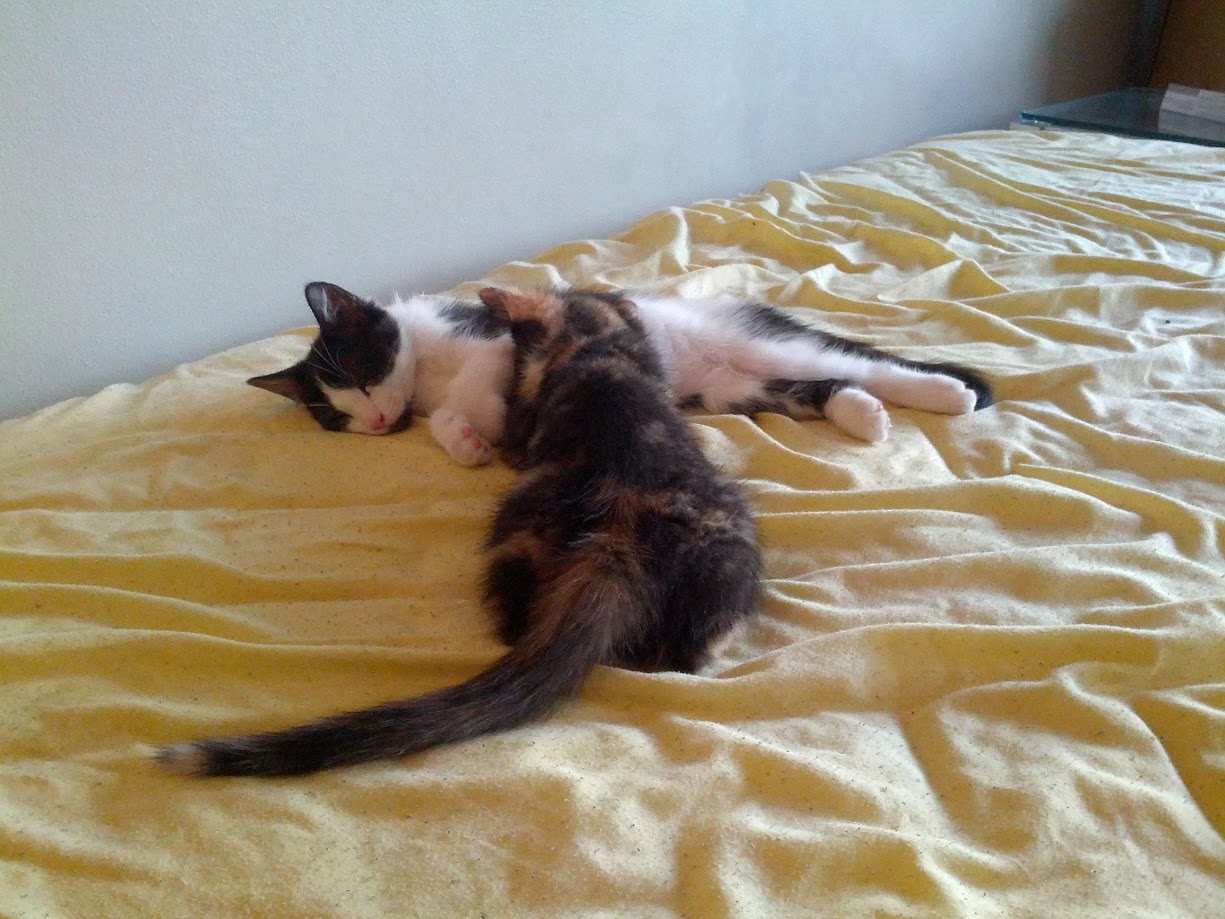
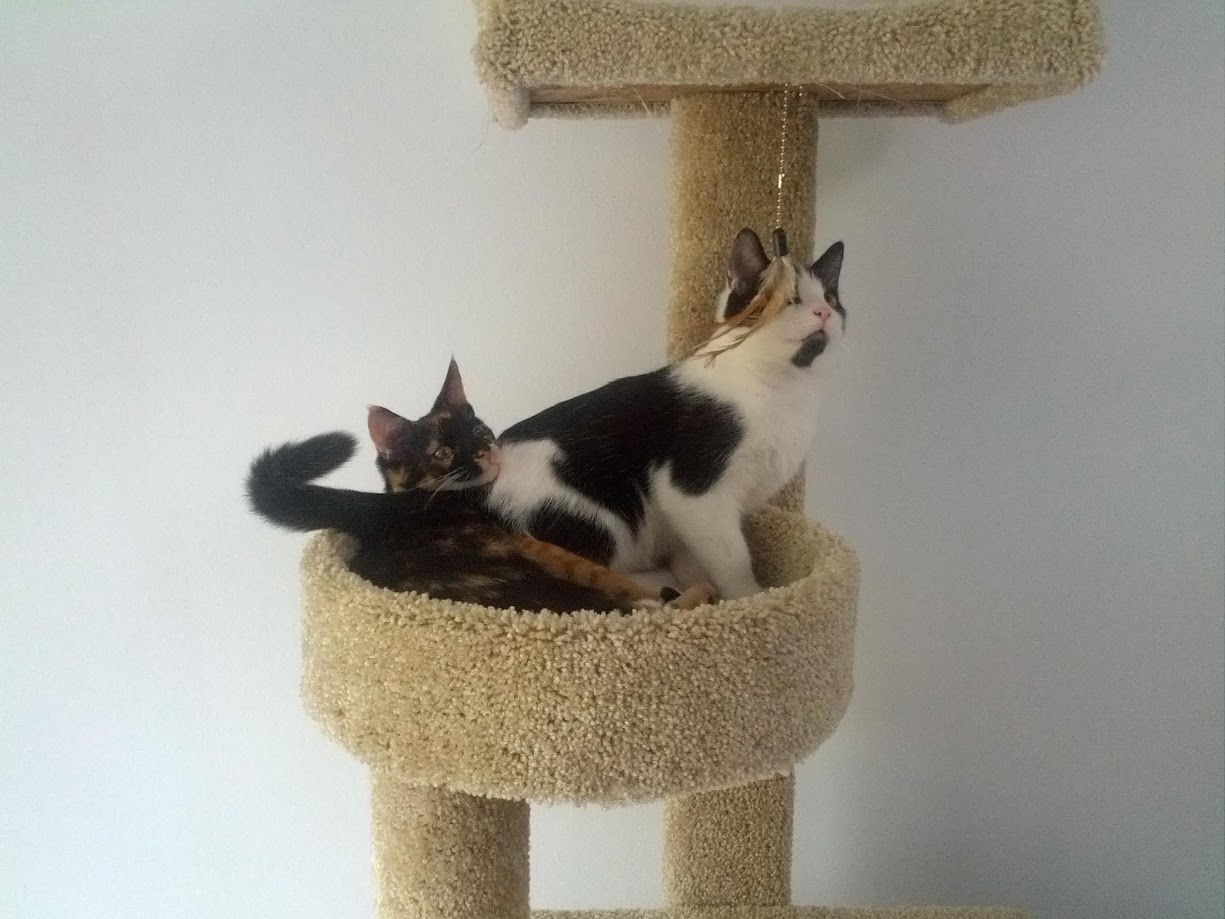
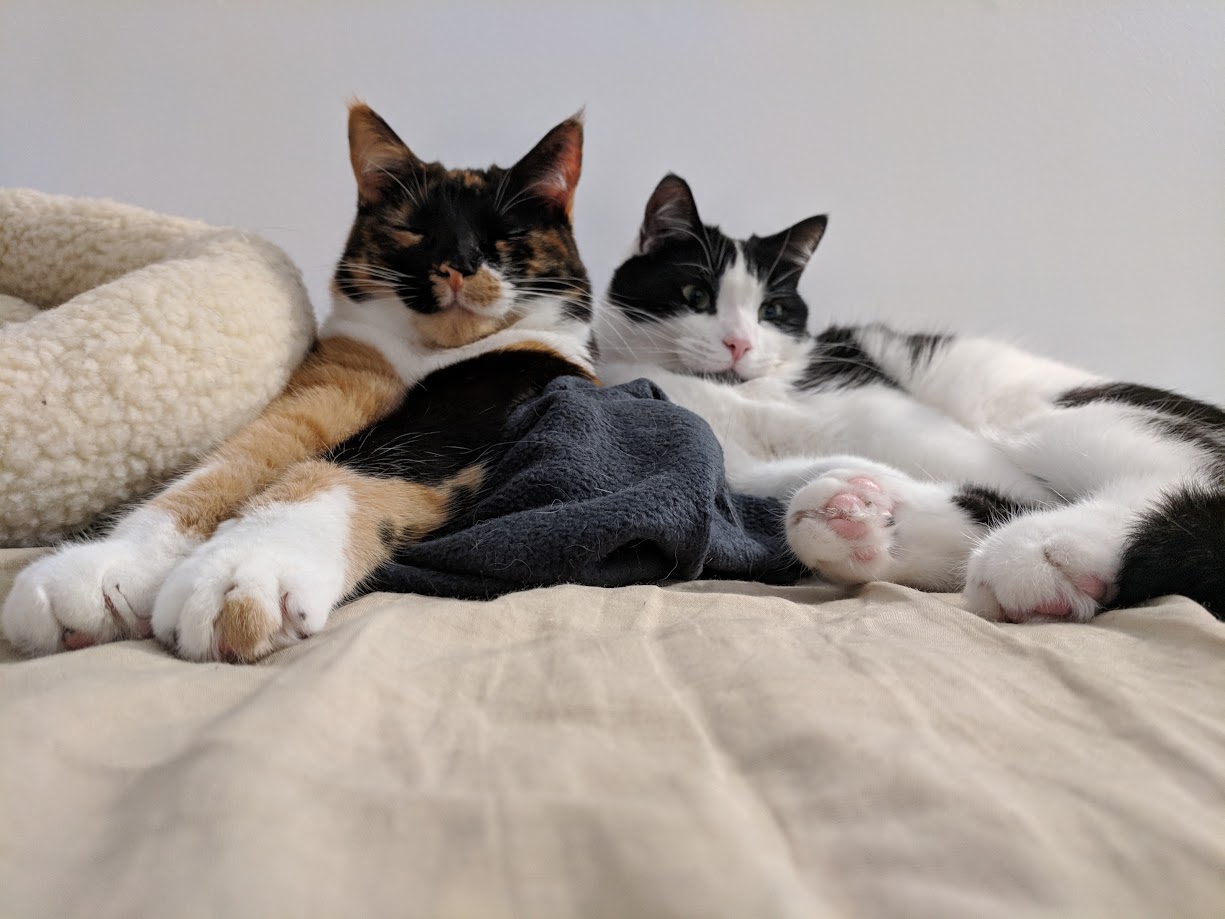
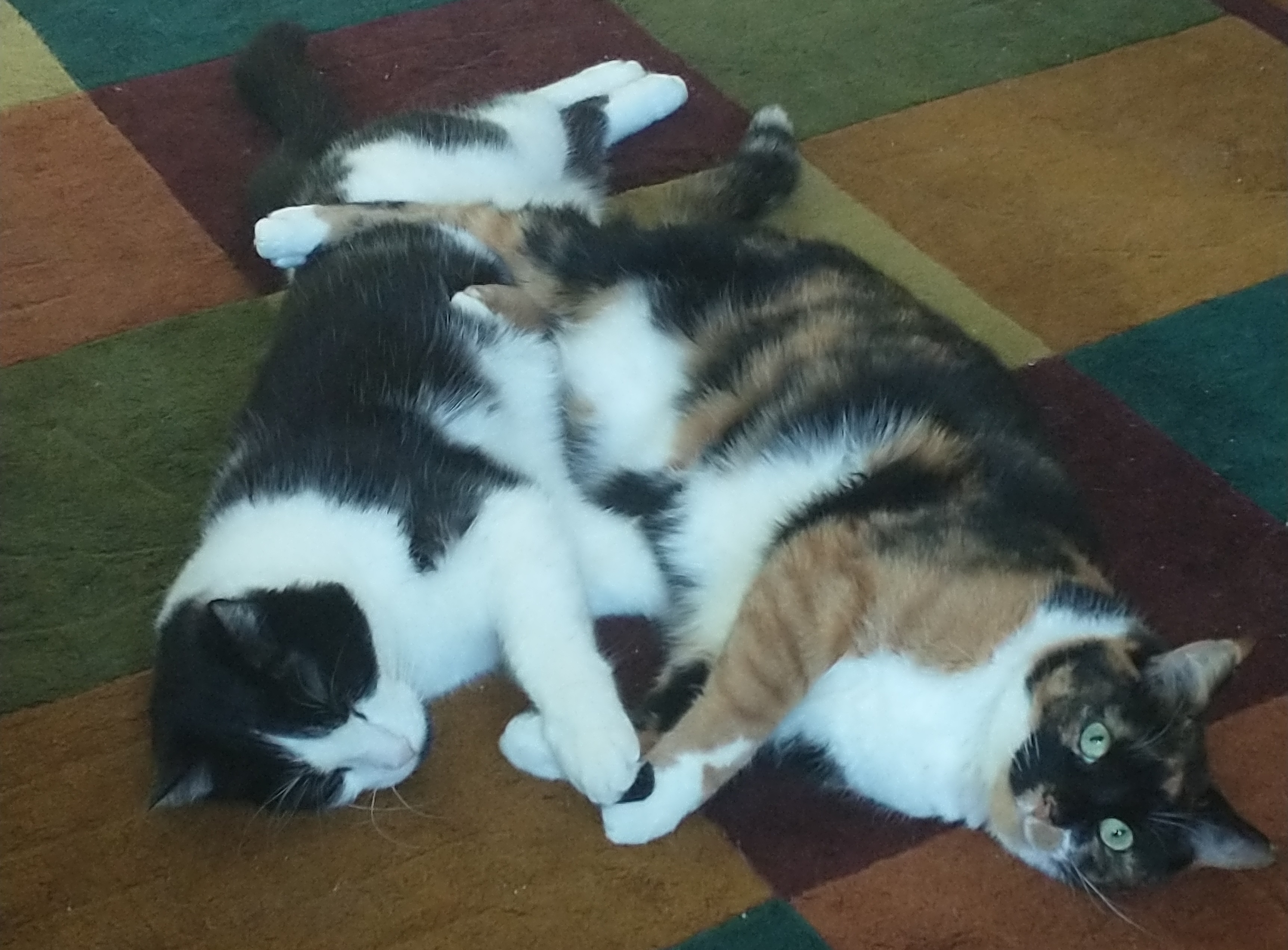
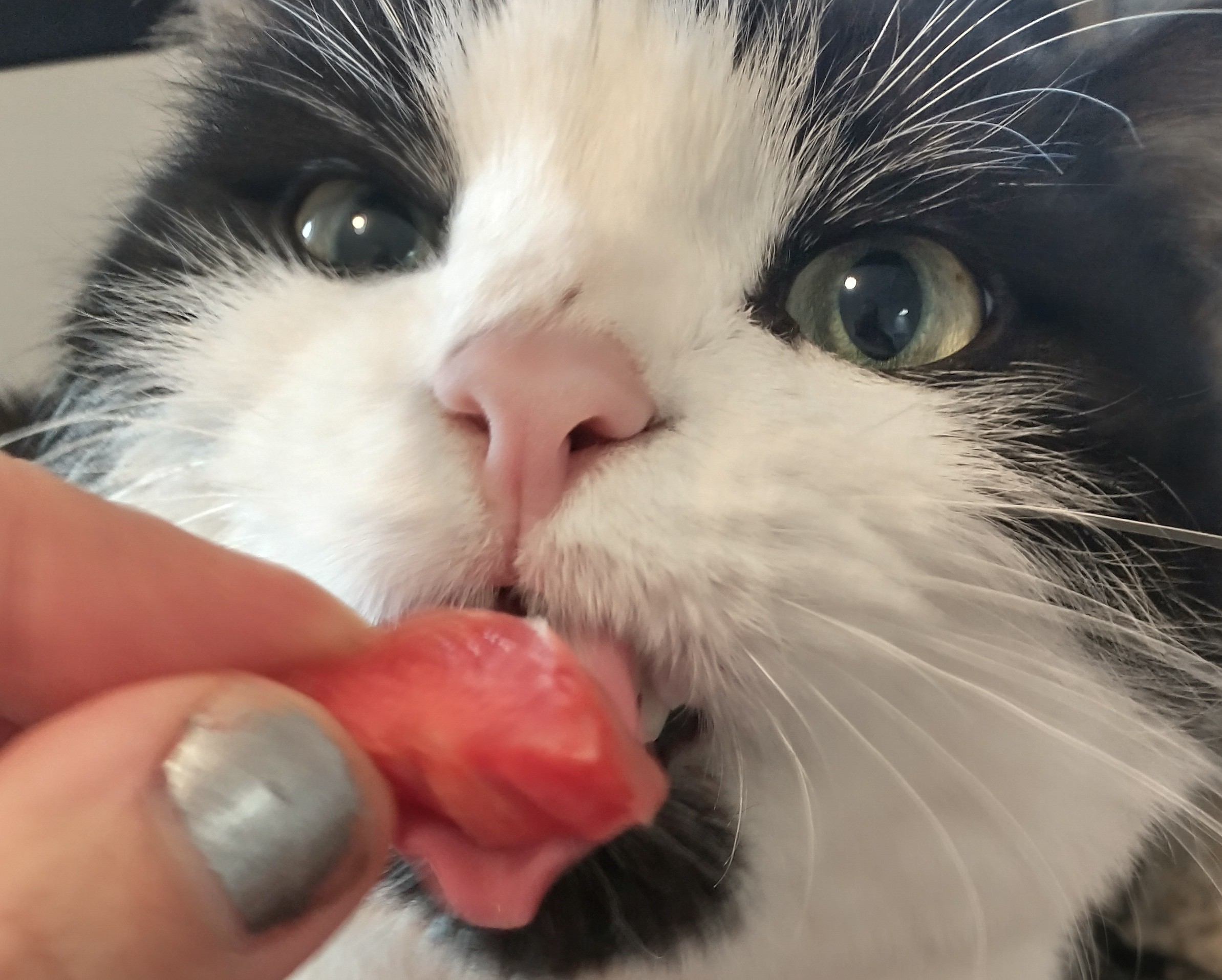
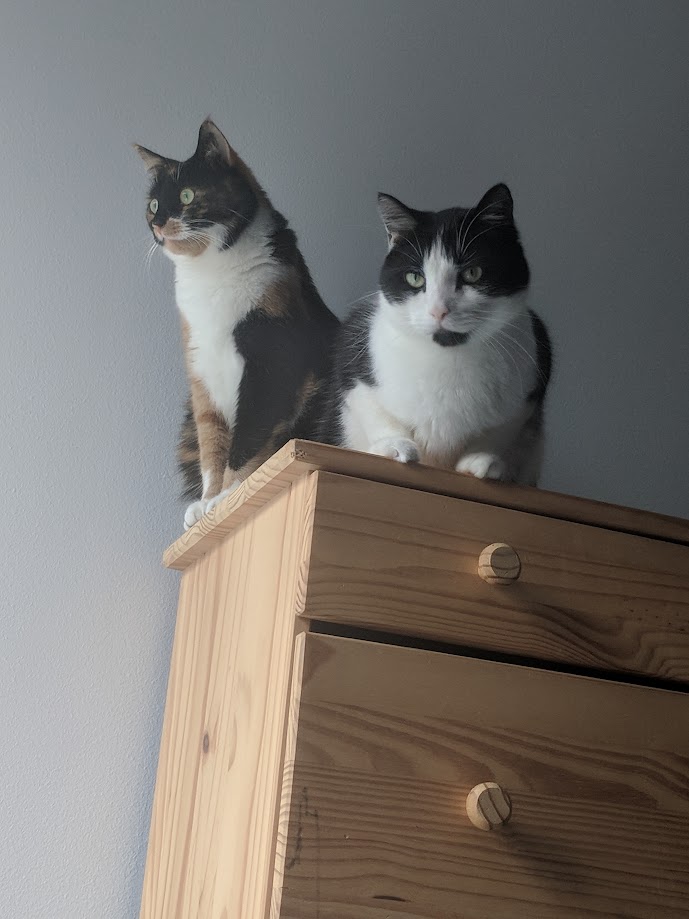
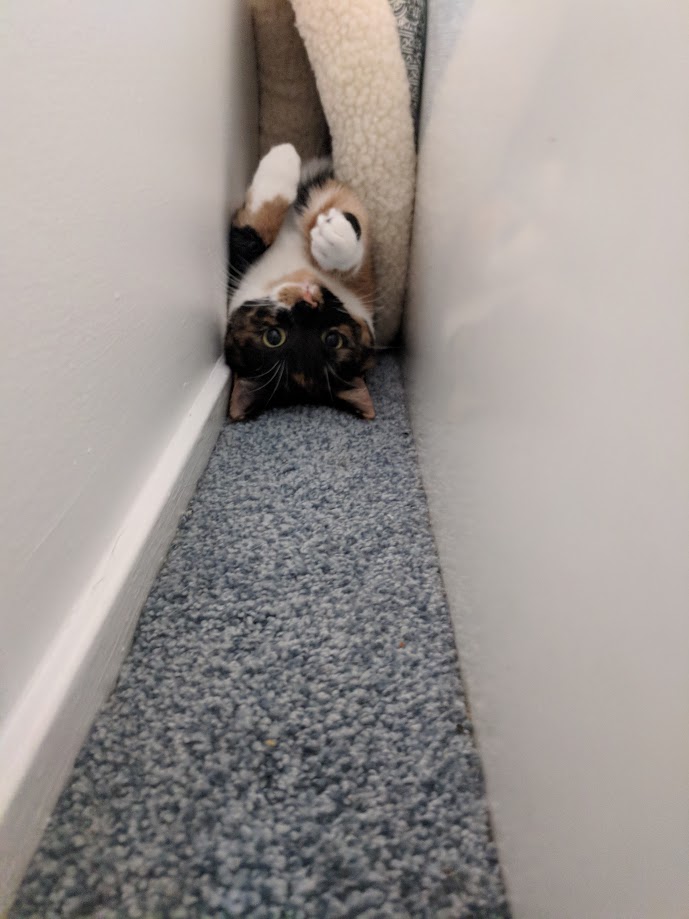
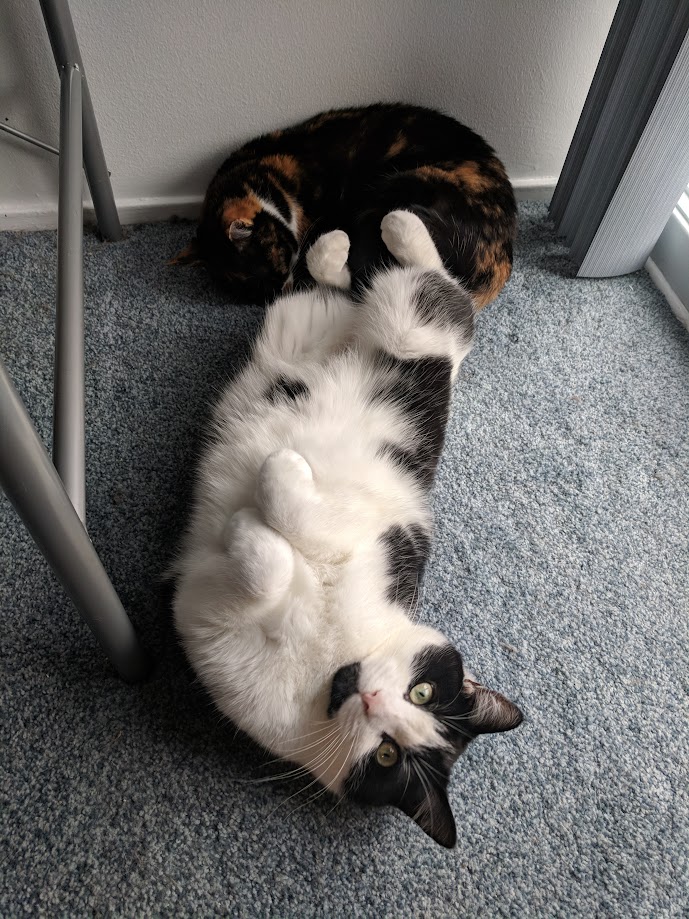
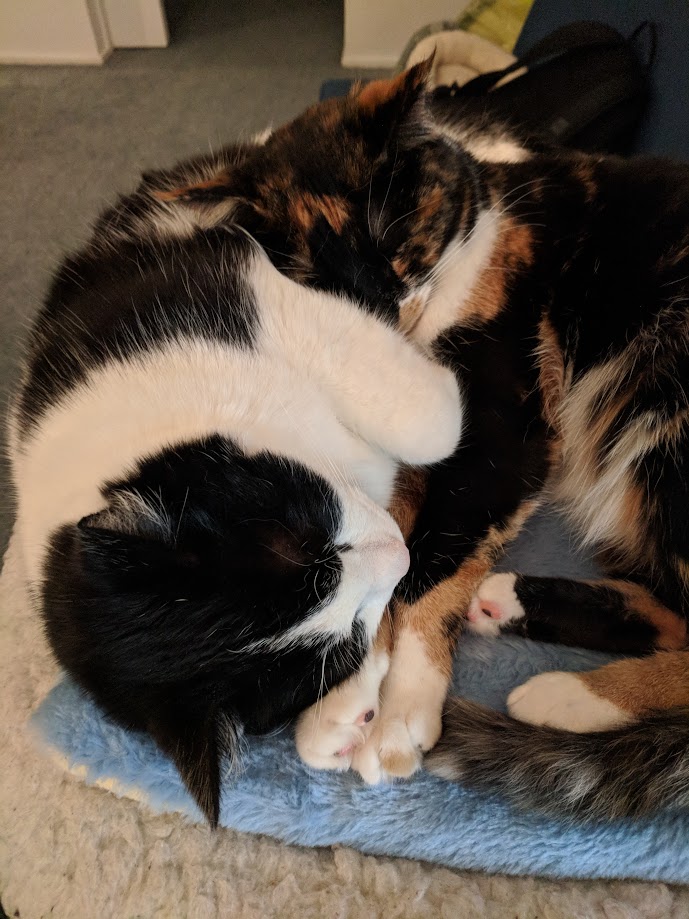
These are my cats. I'll let them speak for themselves.









Back in 2020, I experimented with two types of amateur astronomy.
One especially rewarding project involved setting up a Raspberry Pi microcomputer to take periodic photographs of the night sky. The video below is a timelapse of the stars moving over my house in Ann Arbor one night in August 2020. The rig was not hard to set up at all (I'm hoping to share the code and physical details soon, but there are already good guides online about this), but it took a lot of trial and error to get a totally clear night and find the right exposure times to get a crisp contrast between the stars and the sky. I recommend setting the video to fullscreen to really get the effect.
The other fun approach involved my backyard telescope, a SkyQuest XT8 shown below with a cat for scale. The thing was a beast: it's just a huge metal tube, held up by a chunk of wood and some terrifying metal springs. At the time it was the most aperture you could get for a few hundred bucks. As a PhD student I couldn't afford any fancy astrophotography equipment (or even a decent camera for that matter), and the telescope was way too heavy for me to easily move even as far as the park behind my house. So I used to just drag the telescope onto the balcony and then hold my android smartphone up to the eyepiece. I was at least able to get some fairly crisp, un-distorted shots of the moon.
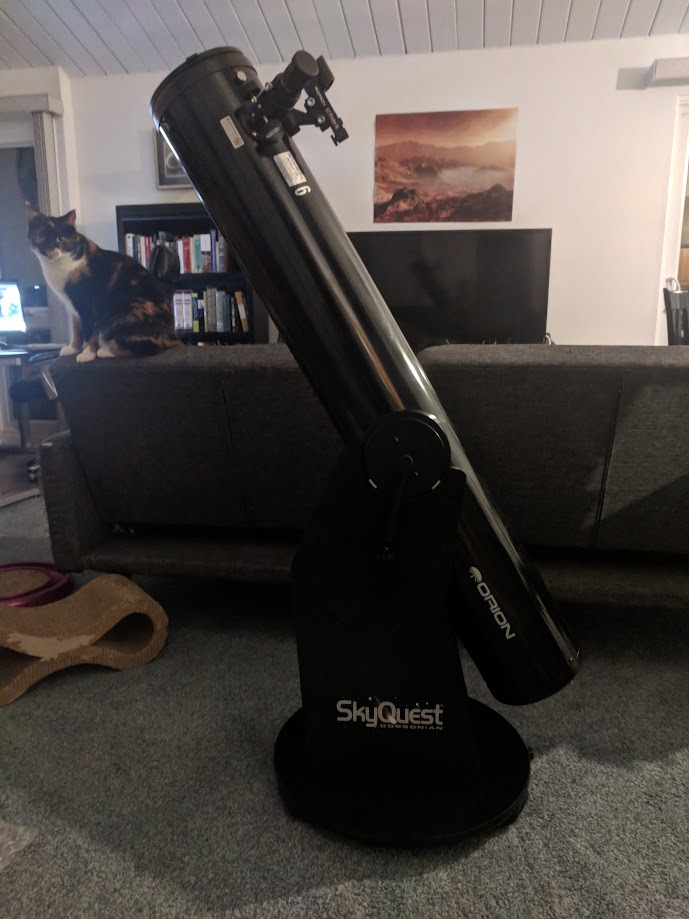
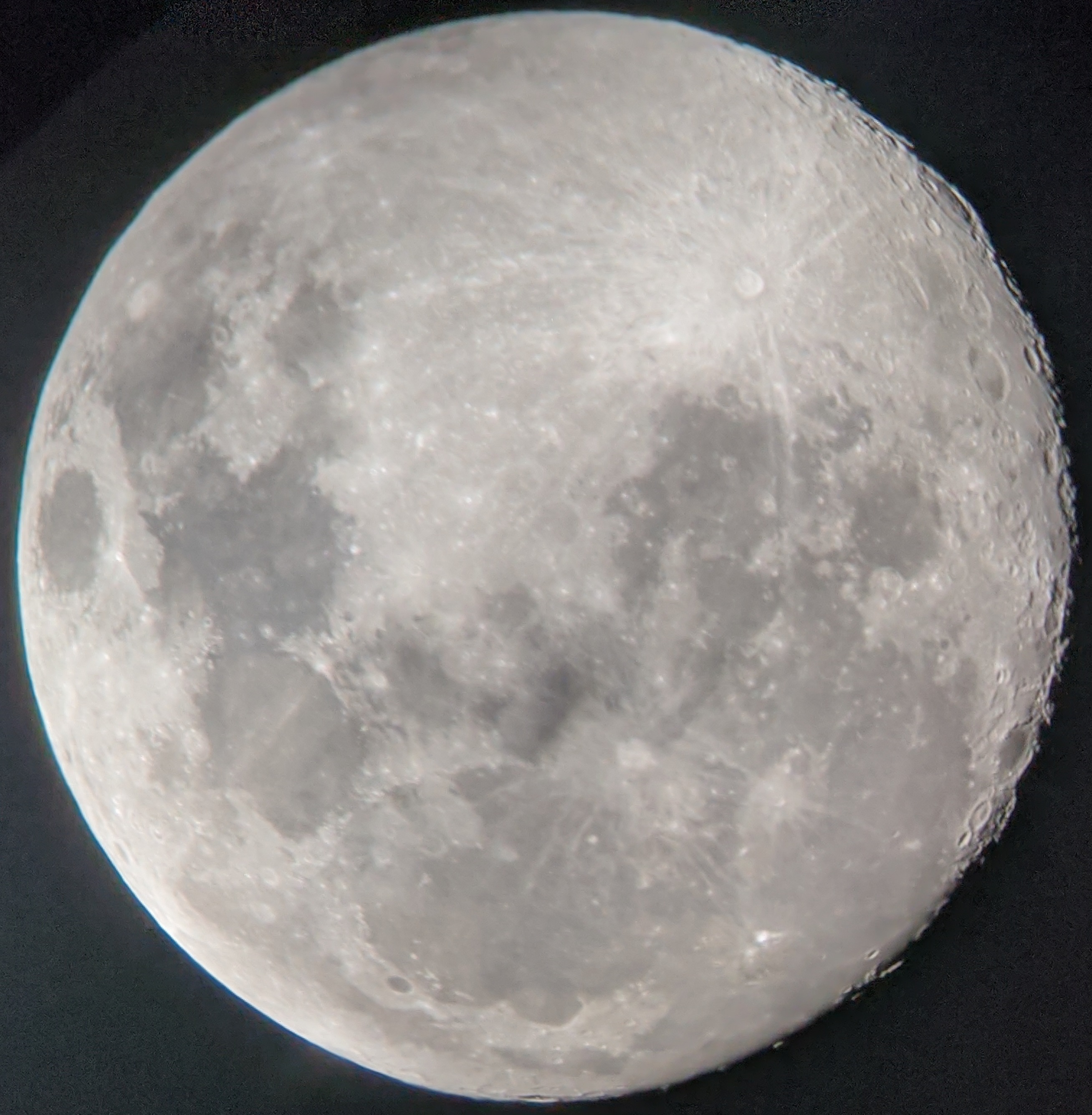

Well, clearly I'm no professional astrophotographer, but I was pretty pleased with what I was able to do in a month or two, stuck at home without a car in a light-polluted region and just about $300 of equipment. When I needed to move from Ann Arbor to Cambridge MA, I didn't want to think about transporting this massive telescope (letalone how I would get this beast up to my fourth floor apartment, or how I would use it once it was up there), so I gave it to some friends, who have since enjoyed using it on their own adventures.